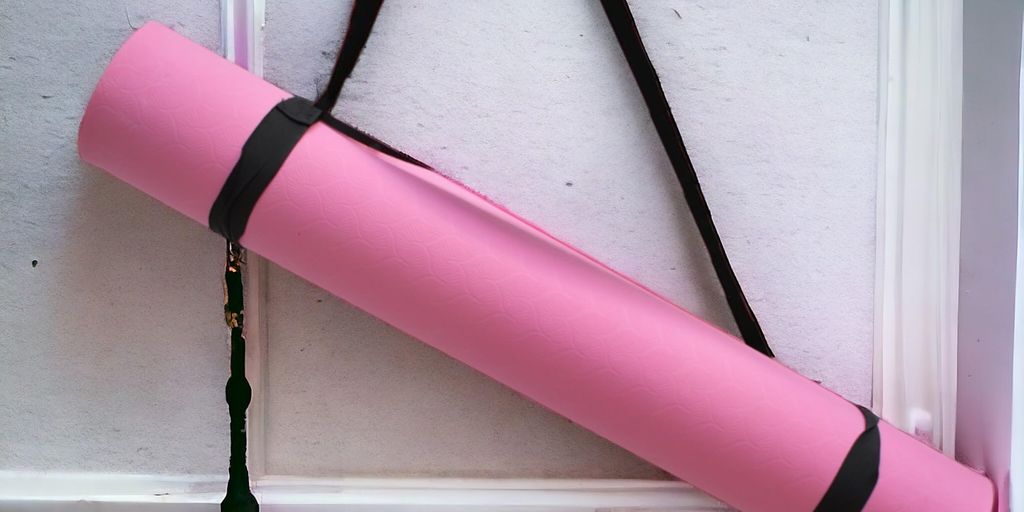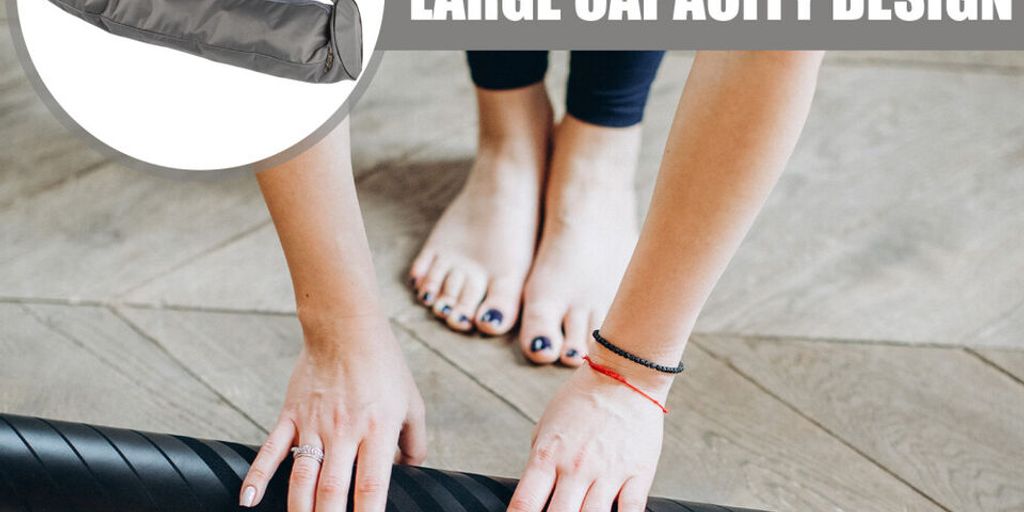
The Ultimate Guide to Choosing a Thick Yoga Mat for Maximum Comfort
Choosing the right yoga mat can make a big difference in your practice. A thick yoga mat can offer extra comfort and support, making poses easier and more enjoyable. It can also help protect your joints and improve your balance. This guide will help you understand the benefits of thick yoga mats, what materials to look for, and how to pick the best one for your needs.
Key Takeaways
- Thick yoga mats provide extra comfort and support, which can make your yoga practice more enjoyable.
- Different materials like natural rubber, PVC, and eco-friendly options have their own pros and cons.
- Finding the right balance between thickness and density is important for both cushioning and stability.
- Look for features like a non-slip surface, good portability, and durability when choosing a thick yoga mat.
- Proper care and storage can extend the life of your yoga mat, making it a good investment.
Benefits of Using a Thick Yoga Mat
Enhanced Comfort and Support
A thick yoga mat provides enhanced comfort and support during your practice. The extra padding helps cushion your body, making poses more comfortable, especially on hard surfaces. This is particularly beneficial for those with sensitive joints or who prefer a softer surface.
Reduced Joint Stress
Using a thick yoga mat can significantly reduce joint stress. The added thickness acts as a buffer, absorbing impact and reducing pressure on your knees, wrists, and other joints. This can help prevent injuries and make your practice more enjoyable.
Improved Stability
A thick yoga mat can also improve stability. The extra cushioning helps you maintain balance in various poses, making it easier to hold them for longer periods. This is especially useful for beginners who are still working on their balance and coordination.
When you discover the benefits of a thick yoga mat, you'll find that it offers enhanced comfort, joint protection, and improved stability. Choose the right thickness based on your body type, practice, surface, and portability.
Materials to Consider for Thick Yoga Mats
Natural Rubber
Natural rubber is a popular choice for yoga mats due to its eco-friendly nature and excellent grip. This material provides a firm yet comfortable surface, making it ideal for various yoga practices. However, it can be heavier and may have a distinct smell when new.
PVC and TPE
PVC (Polyvinyl Chloride) and TPE (Thermoplastic Elastomer) are synthetic materials commonly used in yoga mats. They are known for their durability and affordability. PVC mats offer a sticky surface that helps prevent slipping, while TPE mats are lighter and more environmentally friendly than PVC.
Eco-Friendly Options
For those who prioritize sustainability, there are several eco-friendly options available. Mats made from cork, jute, or organic cotton are excellent choices. These materials are biodegradable and often free from harmful chemicals, making them a great option for environmentally conscious yogis.
When choosing a thick yoga mat, consider the material that best suits your needs and values. Whether you prioritize comfort, durability, or sustainability, there's a perfect mat out there for you.
Thickness and Density: Finding the Right Balance
Ideal Thickness for Different Practices
Choosing the right thickness for your yoga mat can make a big difference in your practice. For gentle yoga styles like Hatha or Yin, a thicker mat (around 6mm) provides extra cushioning. However, for more dynamic practices like Vinyasa or Ashtanga, a thinner mat (3-4mm) offers better stability.
Understanding Density Ratings
Density is just as important as thickness. A high-density mat offers better support and lasts longer. Look for mats with a density rating that suits your needs. High-density mats are great for joint support, while lower-density mats are lighter and easier to carry.
Balancing Cushioning and Stability
Finding the right balance between cushioning and stability is key. Too much cushioning can make balancing poses tricky, while too little can be hard on your joints. Aim for a mat that offers a good mix of both, ensuring you get the best of both worlds.
When choosing a yoga mat, focus on comfort and support to enhance your practice and protect your joints.
Top Features to Look for in a Thick Yoga Mat
Non-Slip Surface
A non-slip surface is crucial for maintaining stability during your yoga practice. Look for mats with textured surfaces that provide excellent grip, even when you sweat. This feature helps prevent injuries and allows you to focus on your poses without worrying about slipping.
Portability and Weight
While thick mats offer great cushioning, they can be heavy and hard to carry. Consider mats that balance thickness with portability. Some mats come with carrying straps or bags, making them easier to transport to and from your yoga class.
Durability and Longevity
Investing in a durable mat ensures it will last through many yoga sessions. Check for high-quality materials that resist wear and tear. A good mat should maintain its shape and cushioning over time, providing consistent support for your practice.
When choosing a thick yoga mat, it's important to find your perfect balance between comfort and practicality. A mat that meets your needs will enhance your yoga experience and help you stay committed to your practice.
Caring for Your Thick Yoga Mat
Cleaning and Maintenance Tips
To keep your thick yoga mat in top shape, regular cleaning is essential. Wipe it down after each use with a damp cloth to remove sweat and dirt. For a deeper clean, mix a solution of mild soap and water, then gently scrub the mat. Avoid using harsh chemicals as they can damage the material.
Proper Storage Solutions
Storing your mat correctly can extend its life. Roll it up loosely and keep it in a cool, dry place. Avoid leaving it in direct sunlight or in a hot car, as extreme temperatures can cause the mat to break down. If possible, use a mat bag for added protection.
When to Replace Your Mat
Even with the best care, yoga mats don't last forever. Look for signs of wear and tear, such as thinning or fraying edges. If you notice your mat is no longer providing the support you need, it might be time for a new one. Regularly check your mat to ensure it still offers the comfort and stability you require for your practice.
Taking good care of your yoga mat not only extends its life but also ensures a safe and enjoyable practice every time.
Comparing Popular Thick Yoga Mat Brands
Liforme
Liforme yoga mats are known for their excellent grip and alignment guides. These mats are made from eco-friendly materials, making them a great choice for environmentally conscious yogis. The mats are also quite durable, ensuring they last through many yoga sessions.
Manduka
Manduka offers some of the most durable yoga mats on the market. Their mats are designed to provide superior cushioning and support, which is ideal for those who practice yoga frequently. Manduka mats are also easy to clean and maintain, adding to their longevity.
Gaiam
Gaiam yoga mats are popular for their affordability and variety of designs. They offer a good balance of comfort and support, making them suitable for both beginners and experienced yogis. Gaiam mats are also lightweight and easy to carry, which is perfect for yogis on the go.
When choosing a yoga mat, consider what features are most important to you, such as grip, cushioning, and eco-friendliness. This will help you find the perfect mat for your practice.
When it comes to thick yoga mats, there are many brands to choose from. Each brand offers something unique, whether it's extra cushioning, eco-friendly materials, or vibrant designs. To help you find the perfect mat, we've compared some of the most popular options. Ready to find your ideal yoga mat? Check out our detailed reviews and recommendations on our website.
Conclusion
Choosing the right thick yoga mat can make a big difference in your practice. It’s all about finding the balance between comfort and support. Remember to consider the material, thickness, and texture of the mat. Also, think about your personal needs and preferences. Whether you’re a beginner or a seasoned yogi, the right mat can help you enjoy your yoga sessions more. So take your time, do your research, and pick a mat that feels just right for you. Happy practicing!
Frequently Asked Questions
Why should I use a thick yoga mat?
A thick yoga mat offers more comfort and support, which can help reduce stress on your joints and improve your stability during poses.
What materials are best for thick yoga mats?
Thick yoga mats can be made from natural rubber, PVC, TPE, or eco-friendly materials. Each has its own pros and cons, so choose based on your needs and preferences.
How thick should my yoga mat be?
The ideal thickness depends on your yoga practice. For gentle or restorative yoga, a thicker mat is better. For more active styles, a medium thickness might be best.
How do I clean and store my thick yoga mat?
To clean your mat, wipe it down with a damp cloth and mild soap. Let it air dry completely before rolling it up. Store it in a cool, dry place.
What features should I look for in a thick yoga mat?
Look for a non-slip surface, good durability, and the right balance between cushioning and stability. Portability might also be important if you travel with your mat.
When should I replace my yoga mat?
You should replace your yoga mat when it starts to wear out, becomes slippery, or loses its cushioning. This usually happens after a year or more of regular use.


